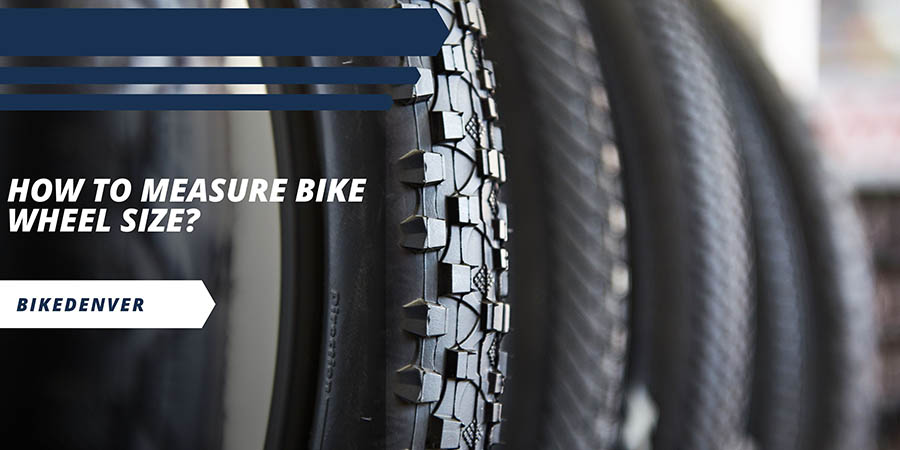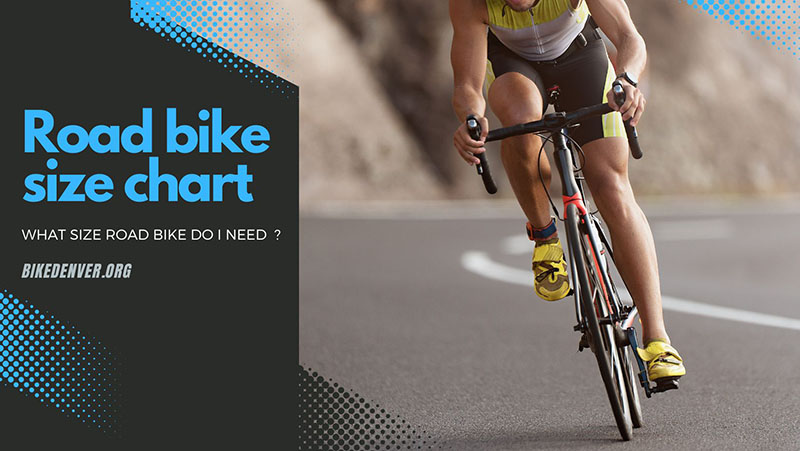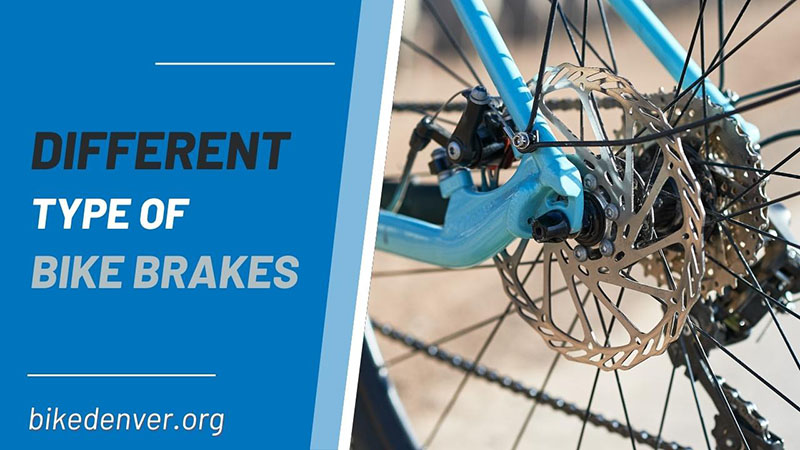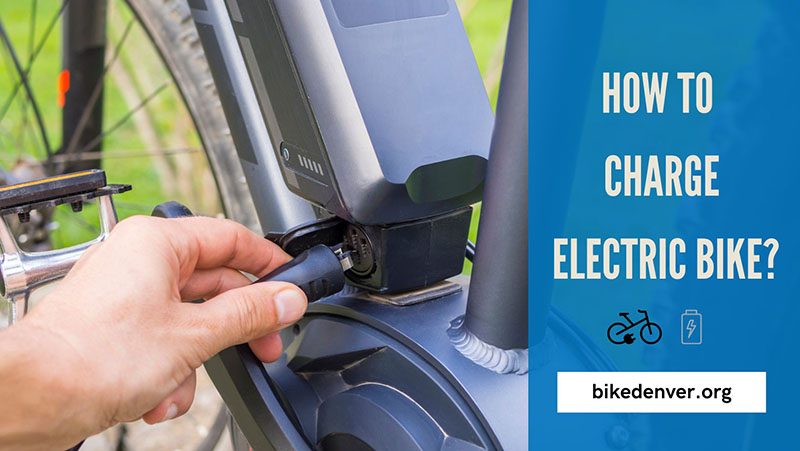The wheels on our bicycles make it possible for us to roll easily, and they also help reduce the impact of bumps and lumps and increase traction on the ground. Still, many riders are unaware of how to measure bike wheel size. Are you one of them?
Do not worry! This detailed guide will show you every step. Just follow along, and you will soon get the correct wheel and tire measurements of your beloved bicycle.
Table of Contents
Why You Need To Measure Size Of Wheels
Knowing how to measure the size of a bike wheel has lots of benefits. It is essential to take the measure of your bike’s tire and wheel since you might need this information at some point. The right wheel size for your bicycle works wonders for you, especially in terms of safety.
You could damage your bike or yourself if you ride with excessively large or small wheels. Thus, measure the wheels to know the exact size you need for your bike to keep both you and the equipment safe.
Moreover, bicycle wheels will eventually wear out, no matter how much you pay attention to taking care of them. Once they lose their usability, you might want to replace them with a brand-new pair of wheels. In this situation, if you already have the measurements in hand, the process of getting new ones will be a lot faster and simpler.
Another case is when you want to convert your traditional bike model to an e-bike. The additional components will put more strain on the bicycle’s frame and tires, so you might want to replace your bike tires. The new ones will need to be more durable so the bicycle frame can withstand the increased pressure.
With the instructions below, we ensure that you will not harm your equipment by using either too big or small wheels. This way, you can also avoid unwanted damage from road hazards.
Types Of Bike Wheels
Not only do wheels come in different sizes, but they are also divided into three different types.
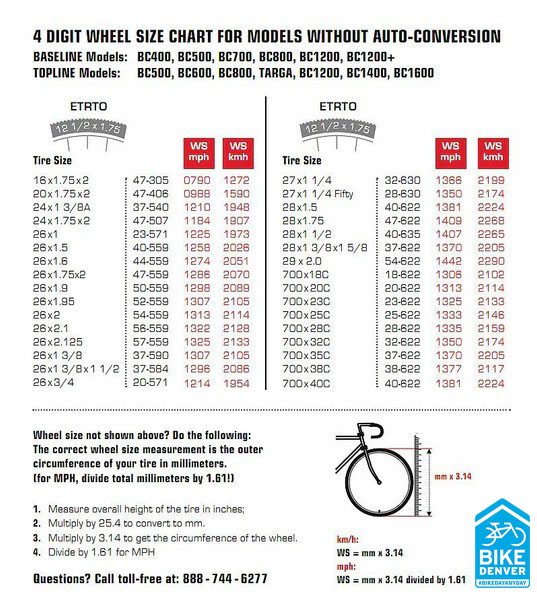
Shallow Section (Less Than 25 mm Deep)
These are utilized on entry-level wheels for the low cost and great strength-to-weight ratio without compromising rider comfort. It is possible to use shallow-section wheels for a range of riding styles, making them great all-around wheels.
Mid Section (No More Than 40 mm Deep)
These wheels are less popular or well-known compared to the deep section option. The notion that a deep wheel equates to a faster and better-performing vehicle is largely to blame. This, however, is not always the case. One type may suit you more than another, depending on your preference and riding style.
Mid-section wheels are known as aerodynamic wheels with a deeper section and a lighter rim. As they are lightweight enough to climb hills and quick enough to take a ride on flat ground, many experienced riders favor them for all-purpose use.
Deep Section (More Than 40 mm In Depth)
Deep section wheels have the biggest aerodynamic benefits for road cycling speed. They smoothly cut through the wind, creating an exciting sensation that is hard to put into words when sprinting out of the saddle.
These wheels are most effective on flat terrain, as this surface generally favors aerodynamics more. They are now, however, light enough to travel through the mountains thanks to advancements in manufacturing technology.
How To Measure Bike Wheel Size
How bicycle wheels are measured is not as complicated as you might think. You have a few options depending on the time you are willing to spend measuring your bike wheel.
Use The Information Manufacturers Provide
This is the fastest and easiest way to take a measure of your bike wheel. Most bicycles come with a specifications manual provided by the manufacturer. You will find all the information and technical details of the sizing and measurements in this little book.
Suppose your bike does not come in a box; do not panic just yet. Typically, the tire wall of a wheel will include the necessary dimension information.
Standard Method
You will find this simple method easiest to follow when it comes to measuring the wheels on your own. Keep in mind that this technique uses inches to measure tire diameter and width.
Here is the measuring bike wheel size guide you need to follow:
- Step 1: Stabilize your bicycle by propping it up against a wall or using the kickstand.
- Step 2: Use a tape measure to measure directly from the lowest point of the tire on the floor to the center of the wheel to determine the radius of the wheel.
- Step 3: Calculate the diameter of your wheel by multiplying its radius by two.
- Step 4: Place the tape measure across the top of the tire to gauge its width.
- Step 5: The figures found correspond to your bike’s standard measurements. Remember that the tire width should always come after the diameter measurement. For instance, a tire with dimensions of 25 x 12.25 would have a 25-inch diameter and a 12.25-inch tread width.
- Note: If your measurements are just above or under, round up or down to the closest size since the diameters are rounded to the closest half-inch.
ISO Method
What is the most accurate method to take measures of a wheel? The answer is the ISO (International Organization for Standardization) standardization method.
It is a measuring system that employs millimeters to determine a bike tire’s size as precisely as feasible. The tire’s width and inner diameter, also known as the bead seat diameter, are measured using this technique.
Here is how you do it:
- Step 1: Check your wheel tire to see whether an ISO measurement is printed on it. If you can’t find it on the tire, check the rim.
- Step 2: Suppose you are unable to find a measurement; stabilize your bicycle by leaning it against a wall or using its kickstand.
- Step 3: With a tape measure, start measuring from the wheel’s center and go up to the inner edge of the tire.
- Step 4: In case you can’t find a tape measure that measures in millimeters and have to count in inches, then multiply that number by 25.4. For instance, 13 inches x 25.4 = 330.2 millimeters (mm).
- Step 5: Take this length, then double it to get your wheel’s diameter. For example, 330.2 x 2 = 660.4.
- Step 6: By taking measurements from one tire side to the other, you can determine the width of the tire. All of the computations required for the ISO approach are now complete.
- Note: For this measurement, the tire’s width is mentioned first, followed by its diameter.
How To Measure The Size Of A Bicycle Tire
The size of your bike tire is an essential component of your bicycle setup. The width and diameter of your tire have a significant impact on how fast your bike rolls, how it handles, and how effectively it grips the ground beneath.
There are two distinct components to bicycle size tires. The bigger value represents the tire diameter, and the smaller one represents the width. The dimensions are commonly shown in inches, although millimeters can be utilized.
Still don’t know how to measure the size of a bike tire? Follow the steps below:
- Step 1: Lean the bike against a solid wall or stand it up using the kickstand.
- Step 2: Hold the tape measure’s end against the wheel’s hub, and bring the tape straight out to the tire’s outer edge.
- Step 3: To find the bicycle tire diameter using conventional method, multiply the number of inches by two. Measuring in millimeters from the wheel’s center to the tire’s inner edge alone will give you the ISO diameter. Double that number to get the diameter.
- Step 4: The tire width is determined by measuring the tread’s flat area from one side to the other of the tire. Notice that for the ISO standard, measure in millimeters and in inches for conventional tires measurement.
How To Measure A Wheel Rim
By taking a millimeter-accurate measurement of the rim width of your bike, you may also estimate the tire size. Follow the steps below to get the correct measurement of your rim-size bike:
- Step 1: Position your bicycle’s wheel vertically and maintain stability without a tire on it.
- Step 2: Press a measuring tape against the rim’s inside walls, where a tire bead is typically located.
- Step 3: Take the measure of the interior distance between the rim’s two sides.
How To Measure Kid’s Wheels
Similar techniques are used to determine the size of a child’s bike’s wheel and tire. Still, notice that the tires of kid’s bikes are sized in inches and are smaller than those on an adult cycle.
Here is how to find the size of a bicycle tire for your youngster:
- Step 1: With the tire mounted on the rim, use the wheel’s outer diameter to get the diameter in inches.
- Step 2: Measure the existing tire from top to bottom using a measuring tape.
Note:
- In case you do not have a measuring tape on hand, certain tires also have the wheel diameter listed on them.
- When you match the wheel size to the child’s inseam, you will better understand what will suit them better.
Most Common Wheel Sizes
Different types of mountain and road bikes come with different wheel sizes. Generally speaking, each of the sizes has its own set of advantages and disadvantages.
Most Common Size Wheel For Road Bikes
The most popular wheel size for road bikes is 700c, which has been the norm for a while. The “c” is an antiquated French width code designation for tires, while the “700” refers to the 700 mm diameter of the wheel.
The “c” denotes a generally broader size, with “a” being the narrowest width and “d” being the widest.
Most Common Size Wheel For Mountain Bikes
There are three standard sizes for mountain bicycle wheels: 29 inches – 622 wheels, 27.5 inches – 650b wheels, and 26 inches – 559 wheels.
The smallest mountain bike wheels, which are 26 inches in diameter, are lighter and more maneuverable than larger wheels. These wheels are no longer the norm, despite their historical prominence, as larger ones have superior traction, grip, and durability and thus gained in favor.
While giving up some of the 26-inch wheel’s acceleration potential, both the 29-inch and 27.5-inch wheels provide a more controllable and comfortable ride.
Frequently Asked Questions
How Can I Take A Bike Wheel Off?
Depending on whether you want to take off the front or back wheel of your bike, there are different steps to follow.
For the front wheel:
- Release the brake.
- Flip the bicycle over.
- Open the quick-release or loosen the wheel nuts.
- Remove the wheel from the fork.
For the back wheel:
- Lower the chain on the smallest cog.
- Open the break.
- Loosen your wheel nuts or quick-release.
- Pull your wheel off while simultaneously drawing back the rear derailleur.
Are All Bike Wheels The Same?
The answer is no; they are not the same. You can only use a certain size of the wheel with a bike because bikes are available in a wide range of sizes. The size of your wheels or tires may typically be adjusted slightly, but wheels that are too small or too big can easily harm your bicycle.
Are Road Bike Wheels Compatible With Mountain Bike Frames?
Yes. It is a common choice for commuters who ride their bikes to work and then swap back to their mountain bike wheels when they hit the trails.
Keep in mind that you will probably need to change something else on your bike since these two-wheel types are designed very differently. It would be best if you used the gear for what it was intended for.
Are Mountain Bike Wheels Compatible With Road Bike Frames?
They can be compatible in some cases. A road bike’s frame often has a narrower wheel clearance compared to a mountain one.
The bigger tires and wheels that come with a mountain bike are frequently incompatible with road bicycle frames due to the decreased wheel clearance that road bikes typically provide. Still, certain narrower 29-inch mountain bicycle wheels with slimmer ties might fit on a road bike with 700c wheels.
Your bicycle may become damaged if you ride with too-large wheels. So, we suggest you should not switch between these two wheels for your own safety.
How Can I Keep Bike Wheels In Good Condition?
You need to pay extra attention to your wheels in order to keep them in good condition. Here is the list of things you should do:
- Check the spoke tension of mountain and road bikes periodically.
- Inspect the bearings of both the rear and front wheels every eight weeks if you ride in dry, mud-free circumstances. In case you travel on wet and muddy surfaces regularly, do the checks once a month.
- Clean and lubricate the springs and pawls.
- Make sure the rim lip is undamaged, and the surface of the brake is spotless.
- Ensure both thru and release axles are tight, and the levers are positioned properly.
Conclusion
So there you have everything you need to know on how to measure bike wheel size. We also cover other useful information on the subject and tips to maintain your bicycle wheels in the best conditions. Hopefully, you can now use this simple guide to get started on taking measurements of the bicycle wheels.
A well-fitted pair of wheels will bring many benefits to your bike and riding experience. On the contrary, wheels that are too big or too small can damage your precious gear and cause potential danger to you. Thus, avoid risks and frustrations by taking a few minutes to get those correct measurements now.

